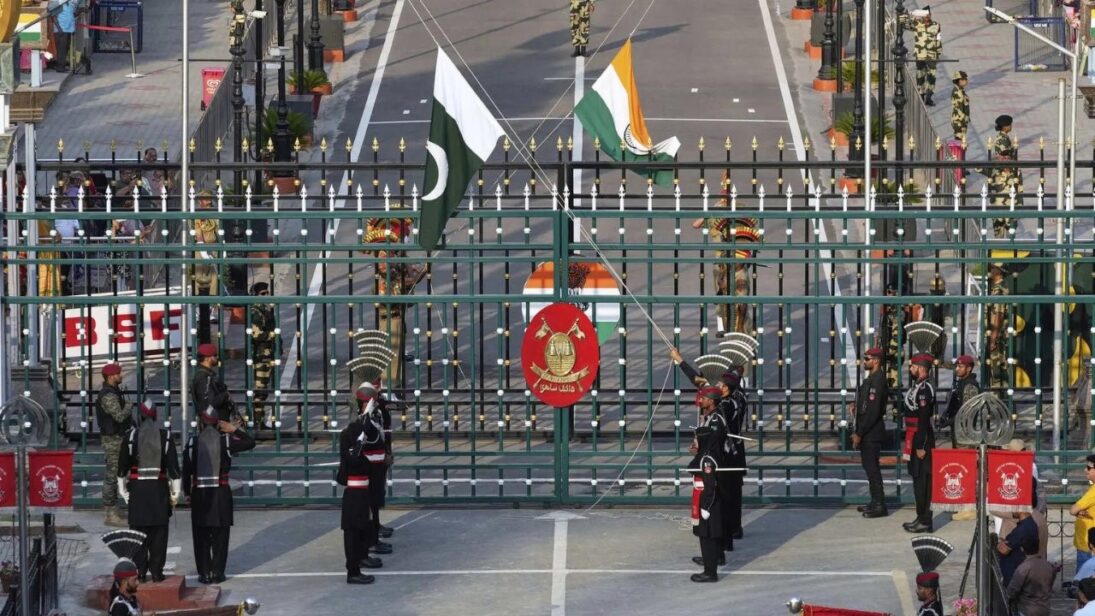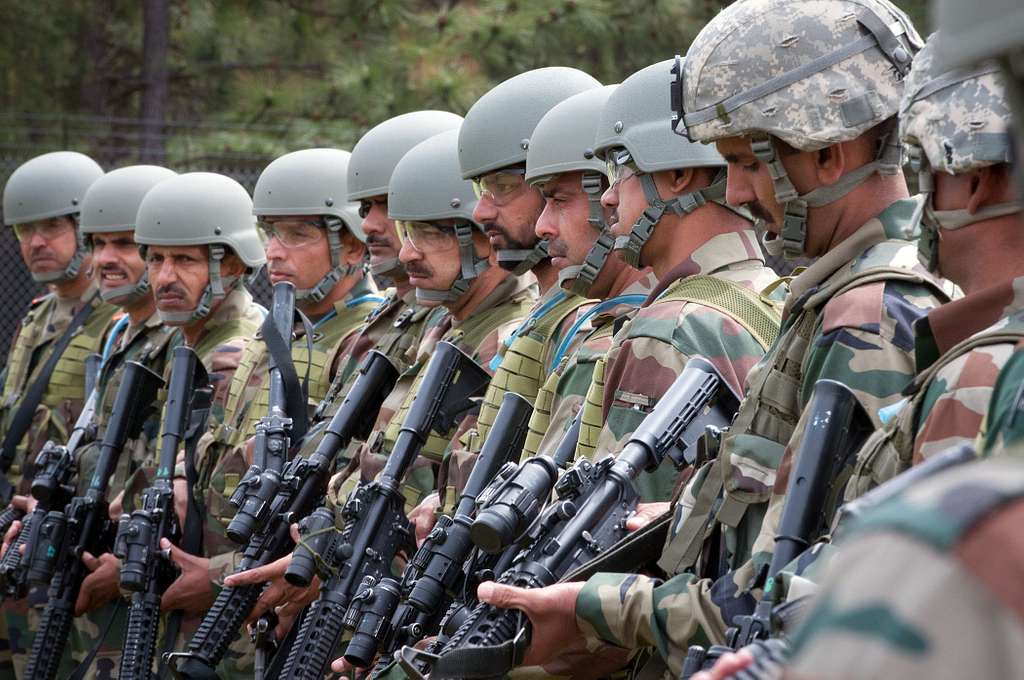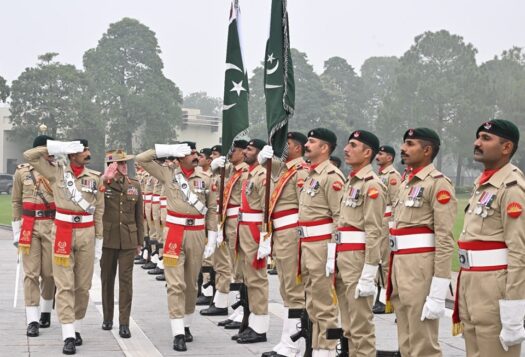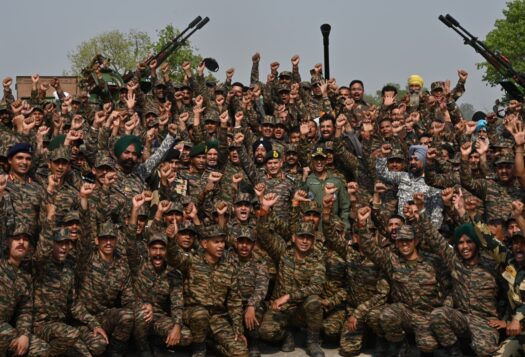
In the wake of the Pahalgam terror attack, a new India-Pakistan standoff emerged, leaving observers anxiously contemplating the implications of India’s escalation and Pakistan’s retaliation. After a four-day confrontation and a ceasefire, the dust is more or less settled on this crisis. But questions remain on whether the ceasefire will hold or give way to another round of escalation between the two nuclear adversaries.
India and Pakistan have been through two militarized crises in the last six years alone—2019 and 2025—which suggests that punitive actions are increasingly becoming the attitudinal and behavioral norm, with each crisis episode witnessing an even more violent escalatory spiral. In such a scenario, it is imperative to closely study India-Pakistan crisis bargaining and focus on how India and Pakistan climb down the escalatory ladder, because it is in the de-escalatory phase that the roots of a future crisis are embedded.
In India-Pakistan crisis bargaining behavior, crisis de-escalation is a function of what I call the “resolve paradox.” Crisis episodes generally entail the demonstration of resolve by adversaries to make their opponent back down. Resolve is a rational strategy for states concerned with ensuring their individual gains or wins at the same time that they want the other side to lose. This presents the central puzzle in crisis bargaining: how can de-escalation occur when both sides display resolve, each side claims a partisan victory and perceives the opponent as having backed down? This is a “resolve paradox” where strategies aimed at escalatory dominance drive increased hostilities while also resulting in crisis termination. In South Asia, the resolve paradox is inherently destabilizing and a dangerous dynamic, putting the region at the risk of nuclear war.
India and Pakistan have been through two militarized crises in the last six years alone—2019 and 2025—which suggests that punitive actions are increasingly becoming the attitudinal and behavioral norm, with each crisis episode witnessing an even more violent escalatory spiral.
The Resolve Paradox and Partisan Wins
Typically, crisis de-escalation follows one side using escalatory dominance to force the other side to back down or both sides agreeing to scale down tensions after mutual accommodation and reciprocal concessions. However, there is a third possibility, wherein each side believes that they have prevailed over their opponent, irrespective of what the other thinks. In this crisis bargaining scenario, both sides occupy a self-perceived position of “winning,” believing they have forced the opponent to either climb down or re-assess their escalatory strategy as prohibitively costly.
The “winning” narrative is not merely directed at the external adversary but also at assuaging domestic audiences and salvaging a state’s reputation as a resolved actor well prepared to match the adversary’s escalatory dominance. The resolve paradox thus emerges when the pursuit of a winning strategy makes a crisis episode hotter and more destabilizing but at the same time allows adversaries to back down once they believe that they have sufficiently prevailed over their adversary.
India-Pakistan Crisis Bargaining: 2019 and 2025
A reading of the 2019 and 2025 India-Pakistan crises offers important lessons in resolve demonstration as the cause for both crisis escalation and de-escalation.
In 2019, following a suicide bombing claimed by Jaish-e-Mohammed (JeM) that killed 40 Indian paramilitary officers in Pulwama, India ordered a surgical airstrike against an alleged JeM-operated madrassah. This strike, about 160 kilometers from the Pakistani capital, claimed 250–300 people. The initial Pakistani response was to repudiate India’s claim that a religious seminary had been targeted and resulted in hundreds of deaths, reminiscent of its posture in the 2016 Uri crisis.
However, unlike Uri, the geographical location of the Indian airstrike in Balakot (in the Khyber Puktunkhwa province) enraged Pakistani public opinion since it was read as India crossing a threshold by hitting outside of Kashmir. Furious journalists questioned the then Pakistani Foreign Minister Shah Mehmood Qureshi on why Pakistan did not shoot down the Indian fighter jets carrying out the strike. In response to growing public displeasure at Indian territorial ingress, the Pakistani Air Force engaged in retaliatory strikes across the Line of Control. This resulted in a minor military engagement whereby an Indian aircraft was shot down and the pilot captured by Pakistan. De-escalation took place after Pakistan safely returned Wing Commander Abhinandan Varthman to India after the latter allegedly threatened Pakistan with missile strikes if it refused to do so.

For India, targeted surgical airstrikes against a Pakistani madrassah housing militants combined with missile strike threats that compelled Pakistan to return the Indian pilot were seen as a “win.” For Pakistan, the downing of the Indian aircraft and the arrest of the Indian pilot were seen as a major success, showcasing its resolve and resilience to match escalation against a bigger adversary. Domestically, Prime Minister Narendra Modi’s reference to the “qatal ki raat” (Night of Slaughter) was an attempt to project Indian actions as a strong message of deterrence to Pakistan, leading to the safe return of Wing Commander Varthman. In Pakistan, Commander Varthman’s comment that the “tea is fantastic” while in Pakistani custody went viral, projecting a moral victory and fostering a sense of national pride at the same time as the phrase became a popular internet meme. Ultimately, both India and Pakistan claimed victory in the Pulwama-Balakot crisis, utilizing their respective interpretations of events, each believing they achieved their objectives while satisfying domestic constituencies and demonstrating superior resolve.
What makes the 2025 Pahalgam crisis unique compared to the Pulwama-Balakot crisis is that firstly, it followed in the wake of the transformed political status of Indian-administered Kashmir post August 5, 2019. India-Pakistan relations had nosedived in the aftermath of that event, with significant reduction in diplomatic engagement, trade, and public diplomacy. Second, crisis onset was a result of the targeting of Indian civilians not military personnel, as evidenced in the Pulwama-Balakot crisis. However, the Indian government’s outrage was palpable given that the attack falsified New Delhi’s claim of normalcy in the Kashmir region. Third, the use of superior battlefield technology including missiles, drones, and cyber warfare directed at each other’s military bases and population centers was the first direct escalation witnessed since the 1965 and 1971 wars, classifying this crisis as a near war situation.
Both states’ claiming of victory for inflicting losses on each other’s military infrastructure combined with partisan and conflicting accounts of who blinked first on May 10 indicates that it was only through the demonstration of resolve and projection of partisan winning positions that the two states climbed down the escalation ladder.
How do we account for the resolve paradox in this particular crisis? What are the respective wins for India and Pakistan? And how did India and Pakistan climb down the escalation ladder? Given the utilization of superior battlefield technology and the expanded geographical scope of military operations, it was adherence to resolve as a strategy to make the opponent back down that determined the escalatory trajectory of this crisis. For India, New Delhi believes it has established a ‘new normal’ with Operation Sindoor that entails its responding to any domestic terrorist attacks with links to Pakistan by targeting terrorist infrastructure in the country. For Pakistan, it claims that Operation Bunyanum Marsoos marks a “defining chapter” in the country’s military history, as it demonstrated its resolute military preparedness in matching India’s escalatory dominance. Both states’ claiming of victory for inflicting losses on each other’s military infrastructure combined with partisan and conflicting accounts of who blinked first on May 10 indicates that it was only through the demonstration of resolve and projection of partisan winning positions that the two states climbed down the escalation ladder.
Future Stability in South Asia
Policymakers should pay attention to how the “resolve paradox” evident in India-Pakistan crises over the past decade or so shapes approaches to bargaining at the nuclear threshold. Here crisis termination is not a product of mutual accommodation or concessions, as witnessed during the Cuban Missile Crisis between the United States and Soviet Union. Rather it is being able to climb the next rung in the escalation ladder without incurring significant diplomatic or military costs, which can then be sold as a domestic win by either side and create space for de-escalation.
The dominance of the strategic logic of superior resolve in India-Pakistan crisis bargaining behavior also means that the de-escalatory phase is essentially destabilizing since we cannot reason with any amount of certainty when the domestic win phase will be reached by each side in the next crisis episode. What can be surmised with some certainty is that the roots of a future crisis are embedded in the de-escalatory phase of the current crisis, since both sides would start from that rung of the ladder the next time around. Thus, crisis de-escalation merits equal scrutiny as crisis onset analysis. Driven by the desire for conventional one-upmanship and with channels of communication closed as well as the fog of war heightened by misinformation and disinformation, both states are prone to grave miscalculation with potentially catastrophic consequences in the future.
Views expressed are the author’s own and do not necessarily reflect the positions of South Asian Voices, the Stimson Center, or our supporters.
Also Read: Post Pahalgam, Does Diplomacy Have a Chance?
***
Image 1: Image via K.M. Chaudary – AP
Image 2: Image via Defense Visual Information Distribution Service


